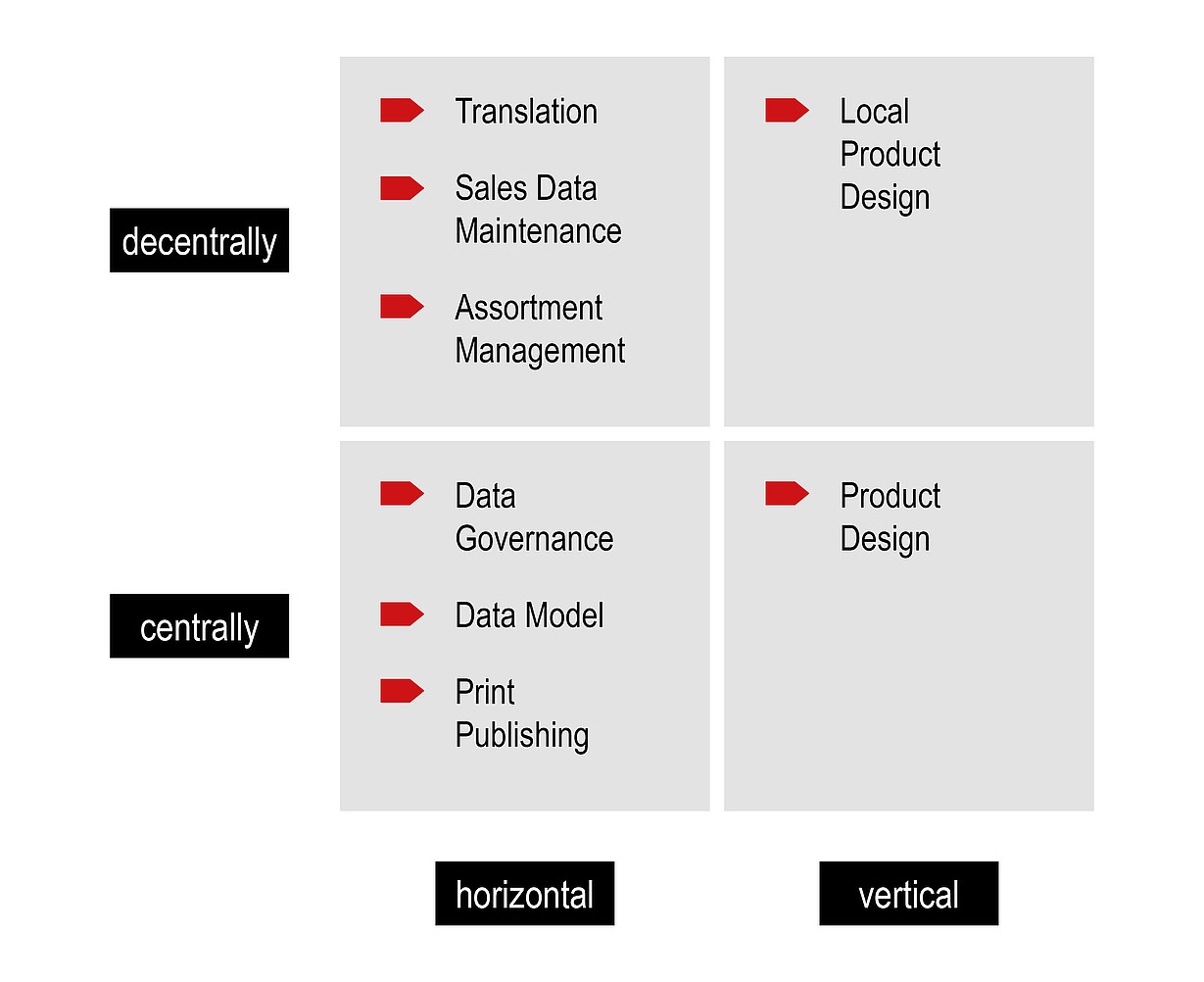Product Information Management (PIM) – an organizational core task?

Product data processes (PDP), ranging from master data management (from product design and supplier onboarding), to category and product management and to target group specific customer approaches through different channels, are usually highly complex and isolated processes within individual departments of process organizations.
Standardization of process and workflow models and of product data management across all departments is a major issue for many companies. Active change management, involvement of all concerned departments and individual and benefit-oriented communication are the key to this challenge. A successful project organization takes this issue into account right from the start by allocating adequate human and financial resources. But who’s responsible for the product data process after its successful implementation? How is the organizational and operational structure specified? This question is increasingly being asked in the context of PDP-oriented projects – but often only when already implementing a technical solution! Thus, companies risk not to tap the full potential and not to meet their long-term objectives. In my experience, the answer to this challenge requires a customized two-dimensional organisational matrix.
First dimension: Central vs. local
The constituent components of product data processes can be assigned either to central or local functional units. PDP processes for data governance, enterprise data models development, print media production, but also IT strategy and requirements management are usually managed centrally. Some sub-processes, however, are partly managed locally, e.g. translation processes in sales organisations or category data processing and administration. Again, within the category ‘data processing and administration’ process, some use cases could be organized locally (e.g. in-house administration of product data) and some others centrally (such as the involvement of agencies in the area of content buying).
Second dimension: Horizontal vs. vertical
With horizontal process and organizational structures, responsibility for product data along the PDP lies largely within individual organizational units. Horizontal PDP organizations are usually set up as parallel, category-based processing units, whereas vertical PDP organizations are based on the more traditional division of labour. Along the PDP process responsibilities of individual organizational units are transferred to the next through defined quality gates. In recent years technical wholesale and retail has focussed mainly on a horizontal alignment of the process and organizational structure, whereas within the industry sector vertical alignment is still predominant.
What is your experience with similar issues? Do you think that a two-dimensional organisational matrix is an adequate approach?
I’m looking forward to your feedback!
Michael Weiß
Principal Business Consultant, Head of Business Consulting